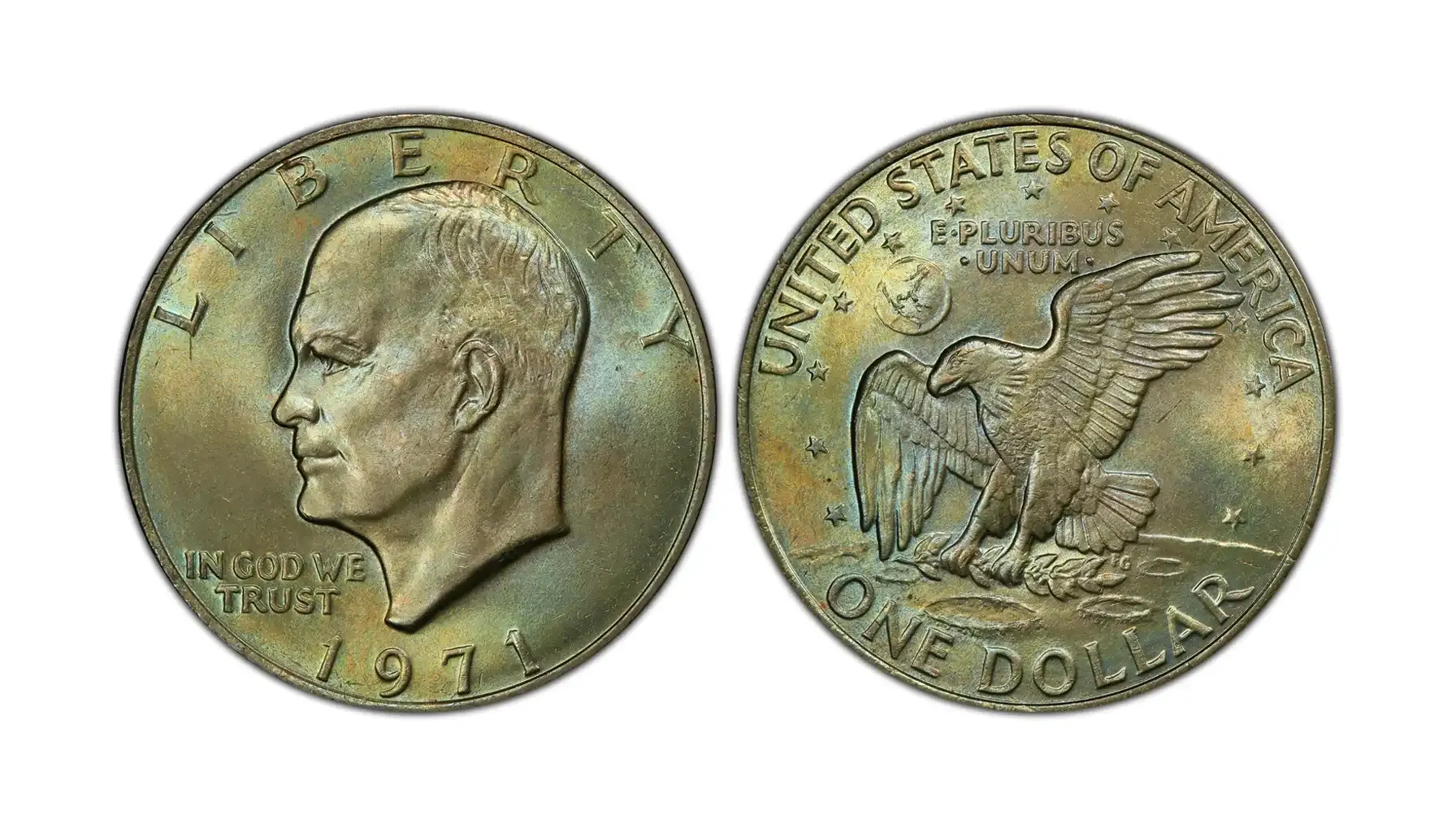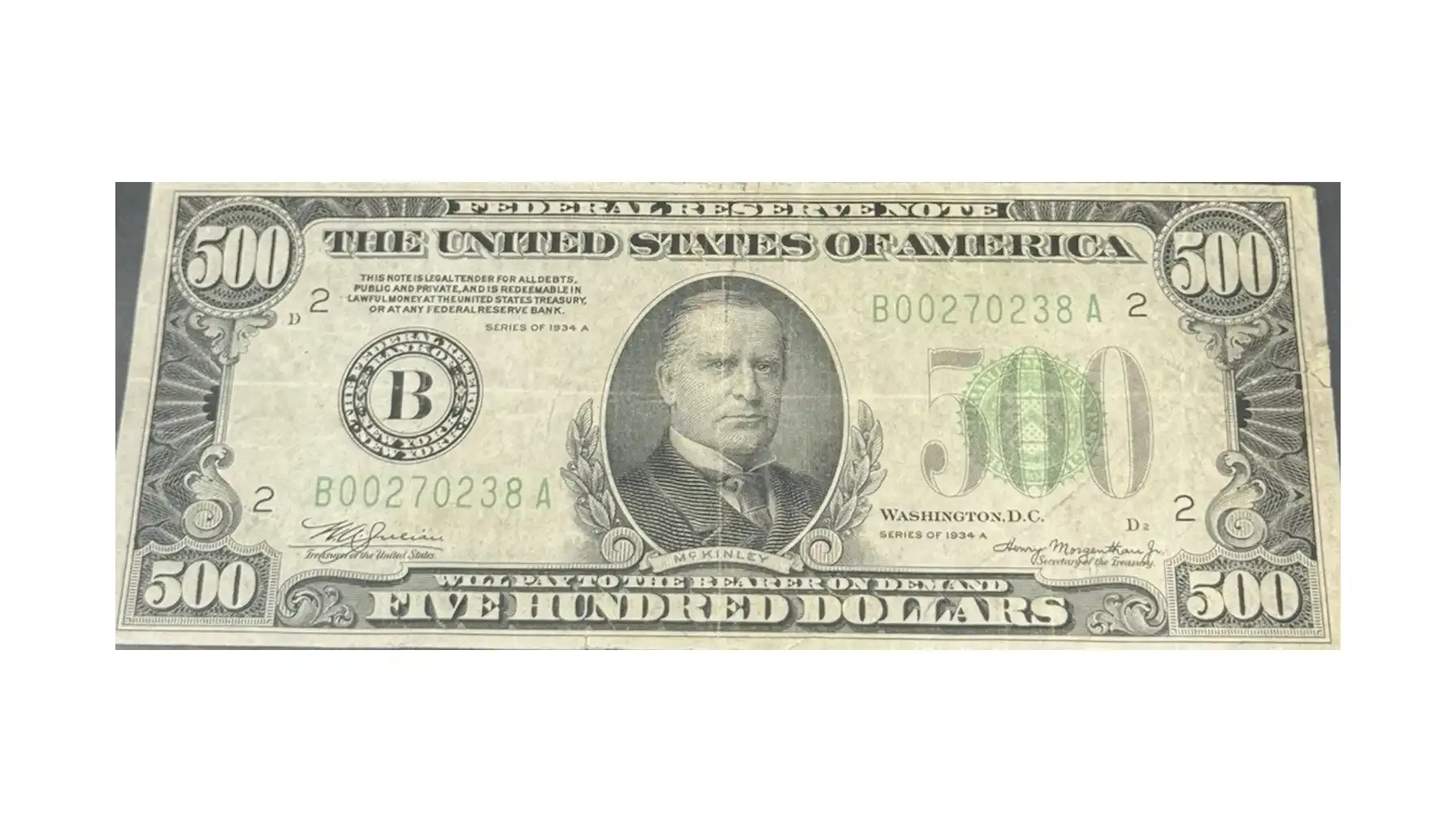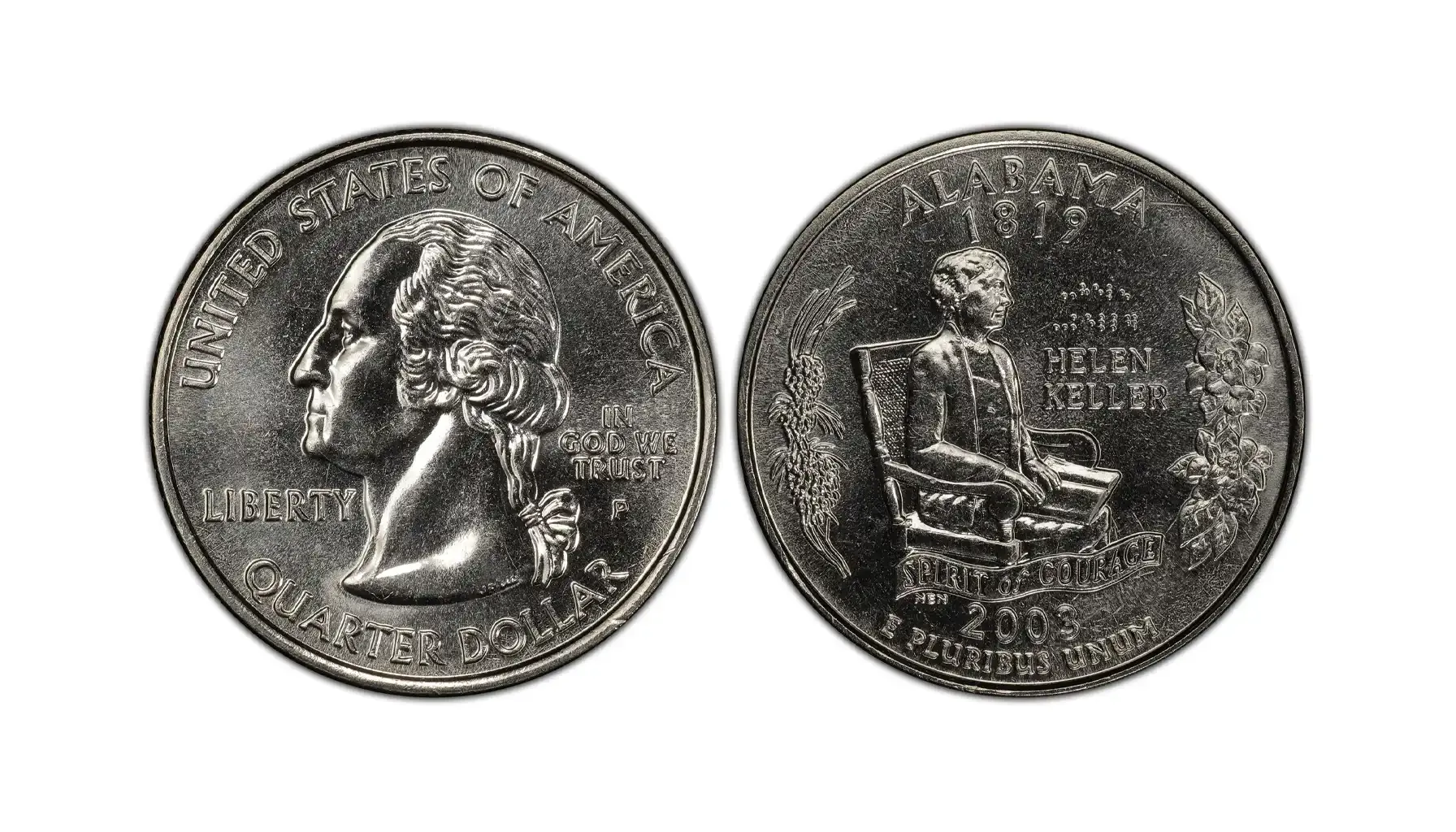Contents:
Why can an ordinary nickel be worth several hundred times its face value? Now it seems that we are talking about the most ordinary example, which is in any pocket. But do not neglect the information about 1974 copper nickel, take a closer look - some specimens can surprise you with their value.
Despite mass production, 1974 nickels worth money is a reality, particularly when it comes to minting errors or pieces in excellent preservation. Thus, the question “what is a 1974 nickel worth?” is one of the most popular requests from beginning collectors.
Why might these ones be of interest? The answer is simple: 1974 nickel errors, rare varieties, high grades, market interest and historical significance make these specimens the subject of collector's hunt for a long time.
And if you are among the ones who are wondering “how much is a 1974 nickel worth today”, then there is good news for you. Now, thanks to digital technologies like a coin value identifier, all it takes is a single photo to instantly check 1974 nickel value today. The app offers only accurate data and reliable information about the piece. But let's not get ahead of the curve - first things first.
1974 Nickels: from History to Collectors’ Interest
This type of coin first appeared in 1938, changing the one with buffalo. On the obverse is the third president of the United States - Thomas Jefferson. And this decision was not accidental: he is a symbol of the Age of Enlightenment, the author of the Declaration of Independence and the embodiment of American democratic ideals.
The reverse features the Monticello House (Jefferson's manor), which came to symbolize his contributions to the country's culture and architecture. This makes each one a part of history, so the interest of nickel 1974 value is well confirmed.
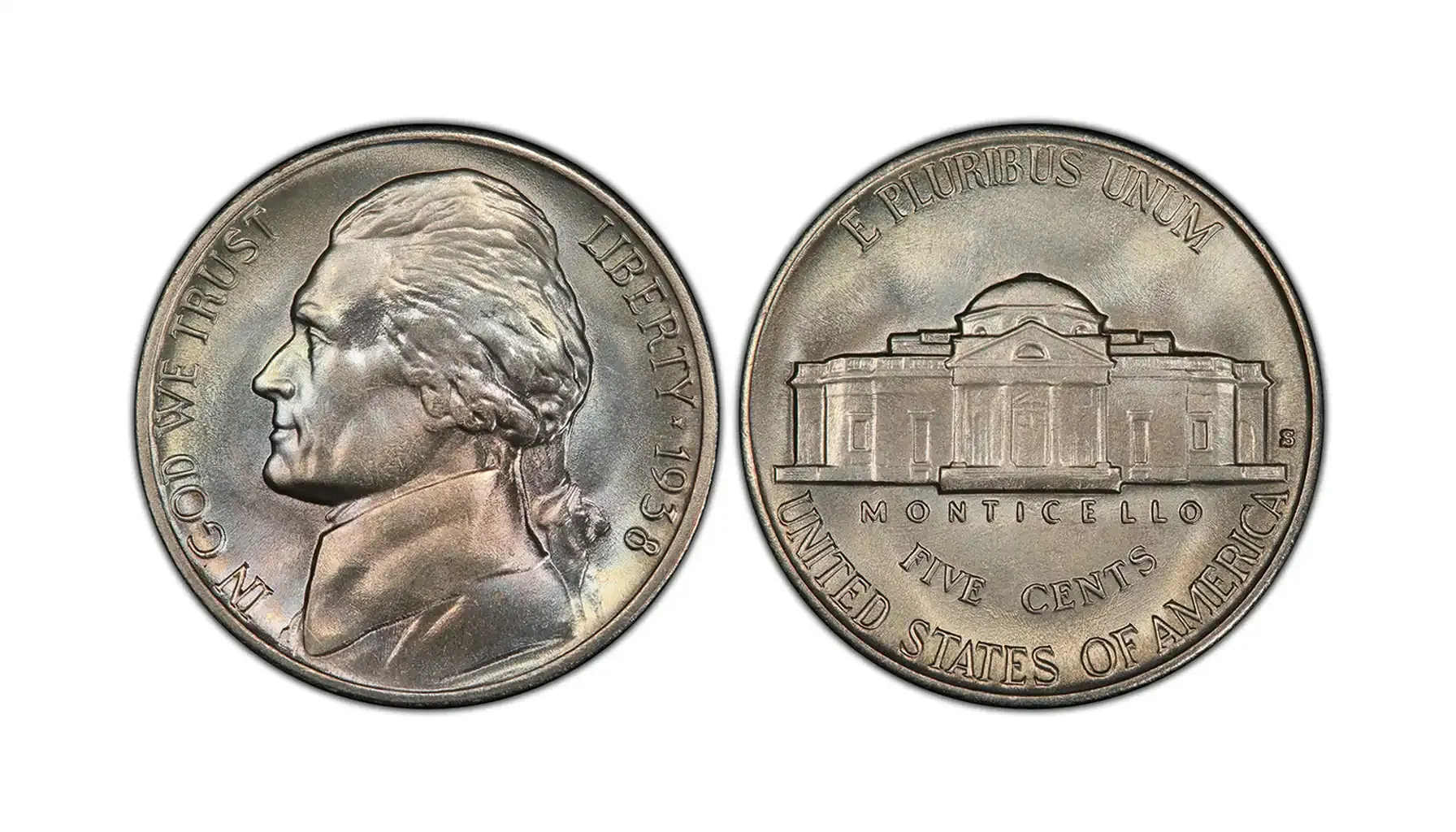
By 1974, these pieces became a solid part of the U.S. monetary system. In the early 1970s, the U.S. was experiencing economic turmoil: inflation, rising metal prices and changes in coinage. However, even today, despite mass minting, 1974 Jefferson nickel value remains a topic of discussion on collectors' forums: among the millions of common examples there are those that are valued in the tens of dollars - and even higher.
Things to Know About This Piece
The 1974 5-cent coin was minted at three mints: Philadelphia (no mint mark), Denver (D), and San Francisco (S, for collector proof issues only). So 1974 d nickel value, 1974 nickel value no mint mark and 1974 s nickel value are three separate stories within the same issue date.
By the way, where is the mint mark on a 1974 nickel? On these coins, it is located to the right of Jefferson's bust, just above the shoulder. This is a main reference point to determine which mint your find was issued.
Basic Features 1974 5-Cent Coin
Parameter | Significance |
Nominal | 5 cents |
Diameter | 21.2 mm |
Weight | 5.00 grams |
Composition | 75% copper, 25% nickel |
Type of backboard | Smooth (no notches) |
Mint mark and mintage figures | None (Philadelphia) - 601,752,000 pieces; S (San Francisco) - 2,612,568 pieces; D (Denver) - 277,373,000 pieces. |
No Mint Mark Coin
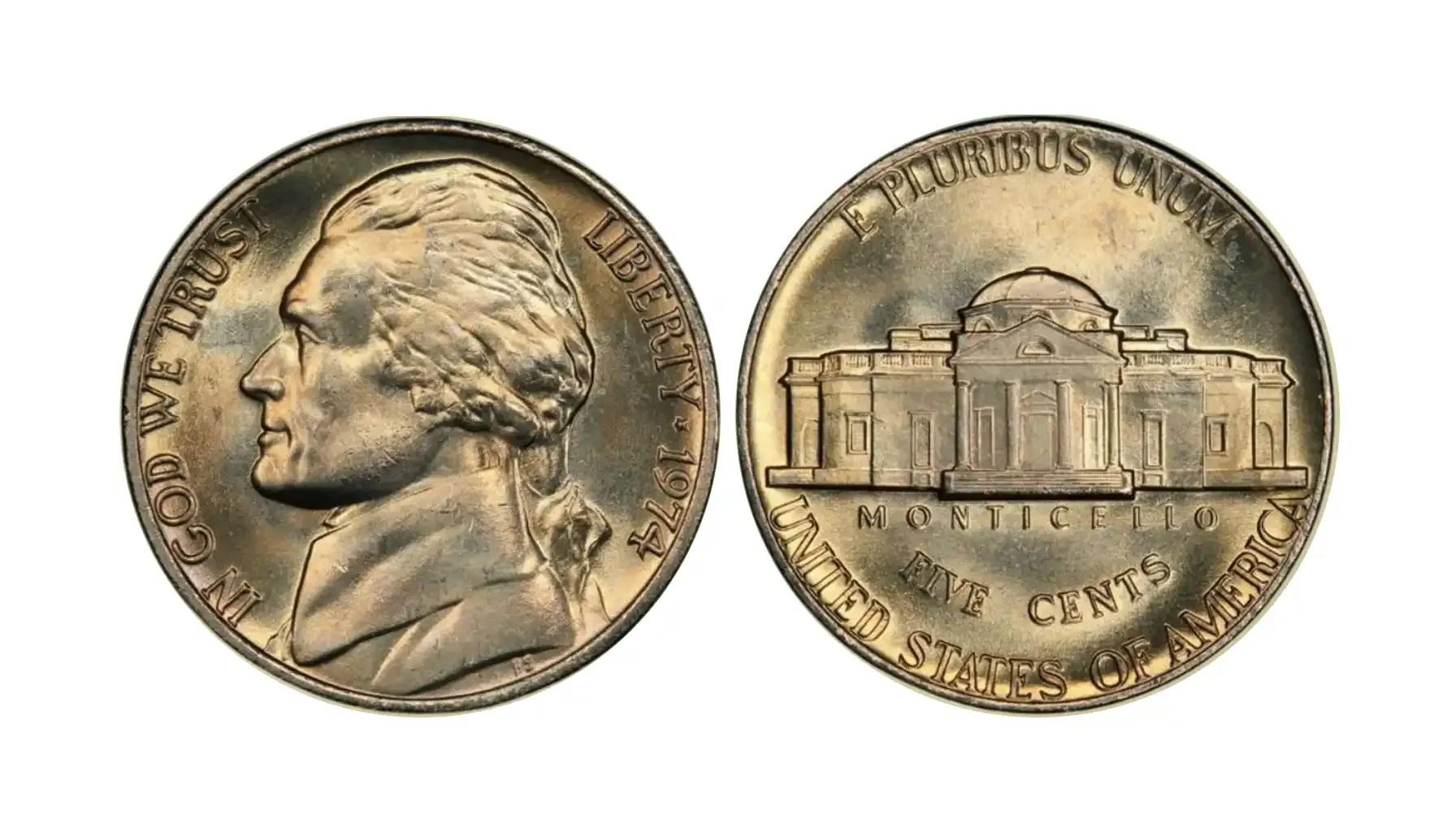
If you do not see the mark, you are looking at a regular issue of the Philadelphia Mint. Such specimens make up a significant part of this year's mintage and are not included in the list of 1974 nickel no mint mark error examples. However, you should not underestimate these ones. But in such a case there is a reasonable question: what is the 1974 no mint nickel value?.
Well, 1974 nickel with no mint mark can take a worthy place in a collection, especially if the coin is well-preserved or has signs of a rare variety. In this case, the price may exceed the face value of the coin several dozen times.
D - Mint Mark Coin
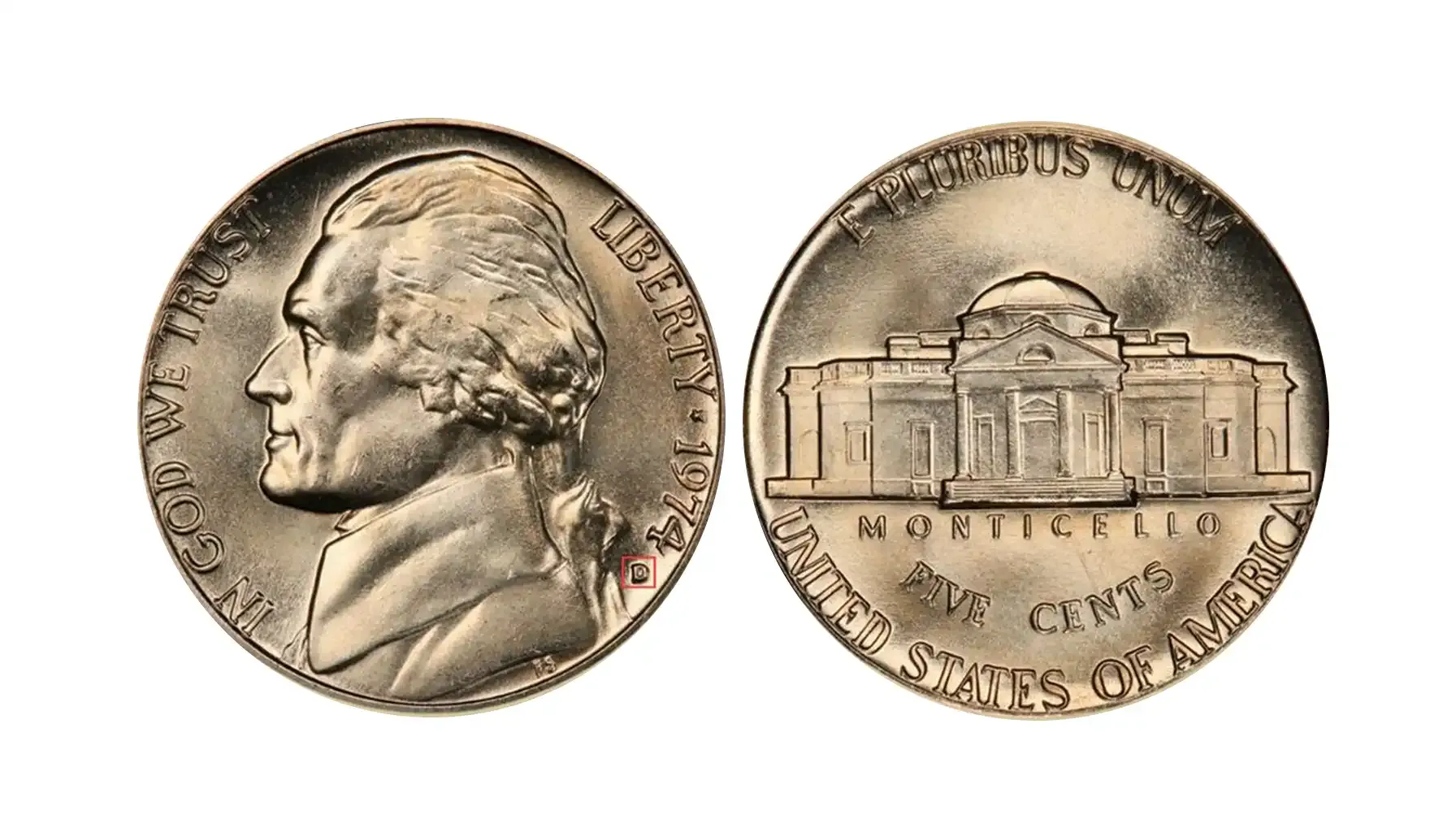
The 1974 nickel d mint mark means that the coin was issued in Denver. Mintage figures of these specimens are also not small; however, some specimens are noteworthy. The value of 1974 nickel from Denver (provided that the coin has a high grade or minting errors) can be estimated at $50-100+.
And here are especially interesting varieties included in 1974 d nickel error list: wrong planchet nickel, obverse misaligned die coin, obverse die crack examples or full step pieces, which can additionally increase 1974 nickel error values.
S - Mint Mark Coin (San Francisco, Proof Issues Only)
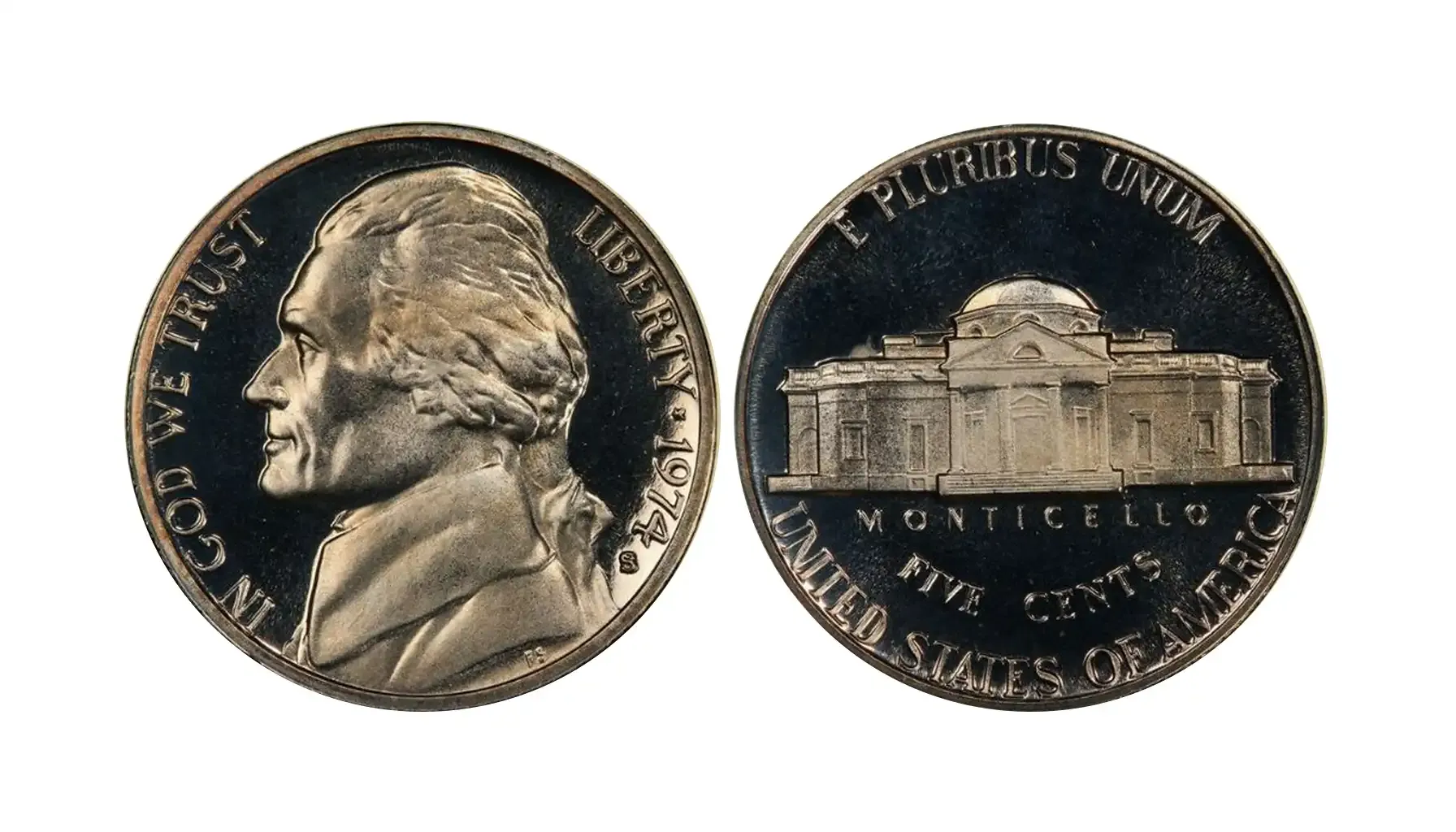
The pieces with the “S” mark were minted only as proof issues and rolls for collectors and did not enter mass circulation. These coins were always characterized by their high quality and mirror-like surface.
And although most of them have collector packaging, sometimes proof coins still get into circulation. By the way, keep in mind that even among proof issues sometimes there are anomalies, so a 1974 nickel error list with pictures or coin identification app will be necessary if you will find an unusual specimen and want to know the nuances of its grading or value.
What Makes Any Coin Valuable
Now that you know what 1974 varieties existed and how they differ from each other, it's time to figure out - why some pieces are worth only $0.10 - $0.20 while others are worth dozens or even hundreds. The value of a particular specimen is made up of several key factors to consider when grading.
Here are the most important ones:
Condition of the coin (grade): Specimens graded MS65 and above can be valued in the tens of dollars.
Mint errors: Errors on coins significantly increase the value of a coin, depending on the rarity and sight of the defect.
Rare coin varieties: Some coins have unique minting features that make them particularly attractive to collectors.
Provenance and packaging (Proof Sets, original rolls): Coins from original bank rolls, Mint Set or Proof Sets can maintain perfect quality and have added value because of the provenance.
Market demand and trends: Coin prices fluctuate depending on market demand. Thus, during periods of growing interest in minting errors or certain years, the value of even common specimens may rise.
Error Examples of 1974 Jefferson Nickel to Pay Attention
Now, let us move from theory to practice — below you can see some interesting 1974 Jefferson Nickel errors that can be sold for impressive sums.
1974 Nickel Struck on a 1973 Nickel
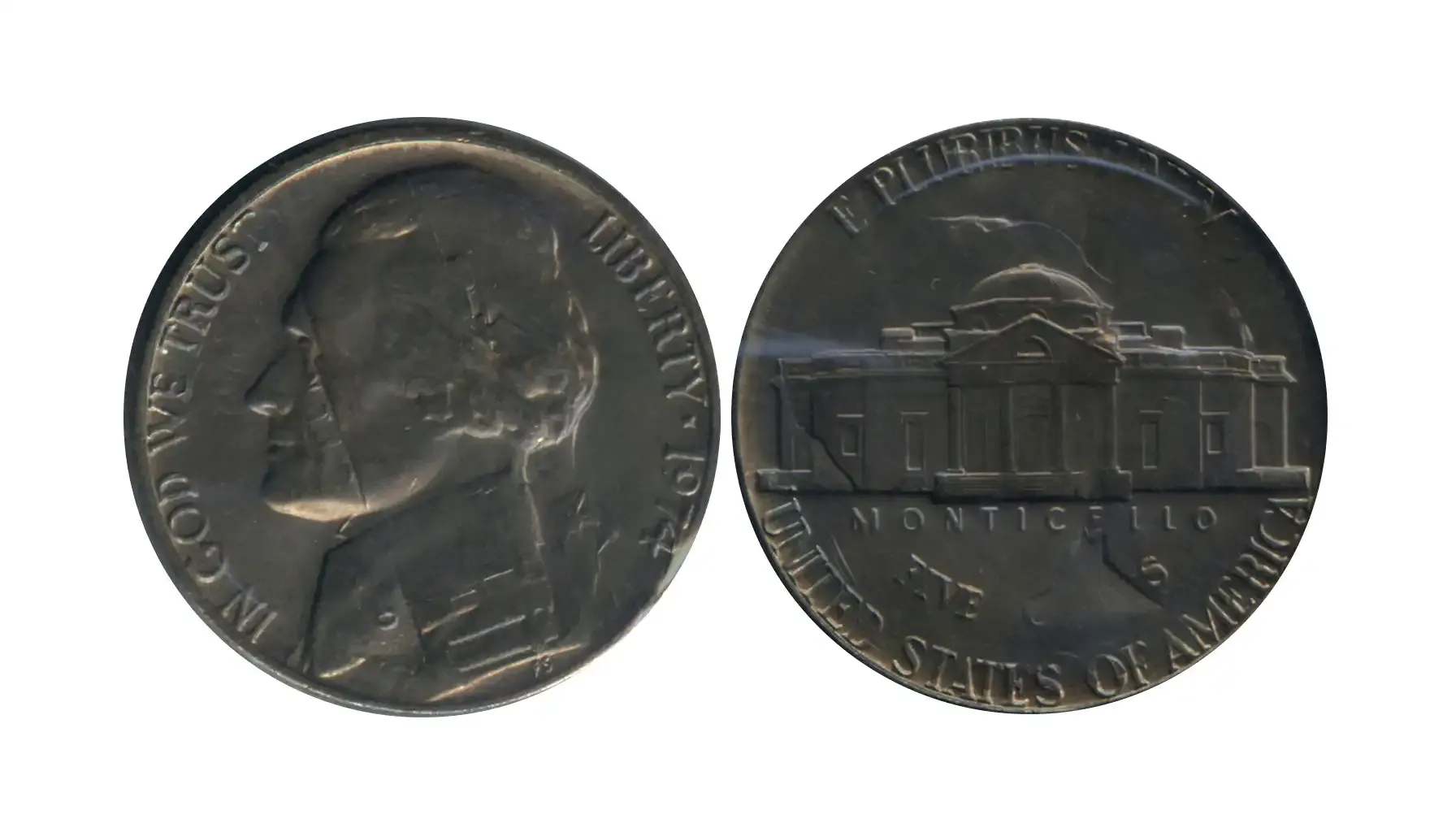
The coin is minted on a blank from 1973.
Design elements of both years are present.
A rare error that increases the worth of the coin.
This error occurs when a blank from the previous year is accidentally used to mint the next year's coin. This results in coins with design elements from both years, which makes them unique and valuable to collectors.
1974-D Nickel Struck on Split Planchet Before Strike

The coin is minted on a layered blank.
The weight of the coin is 2.7 grams instead of the standard 5 grams.
The surface of the coin has typical cracks and delaminations.
This error occurs when the blank has internal defects or delaminations prior to minting. This leads to an unusual design of the coin and a decrease in its weight (which also makes such specimens interesting for collectors).
1974 Nickel with Obverse Die Break
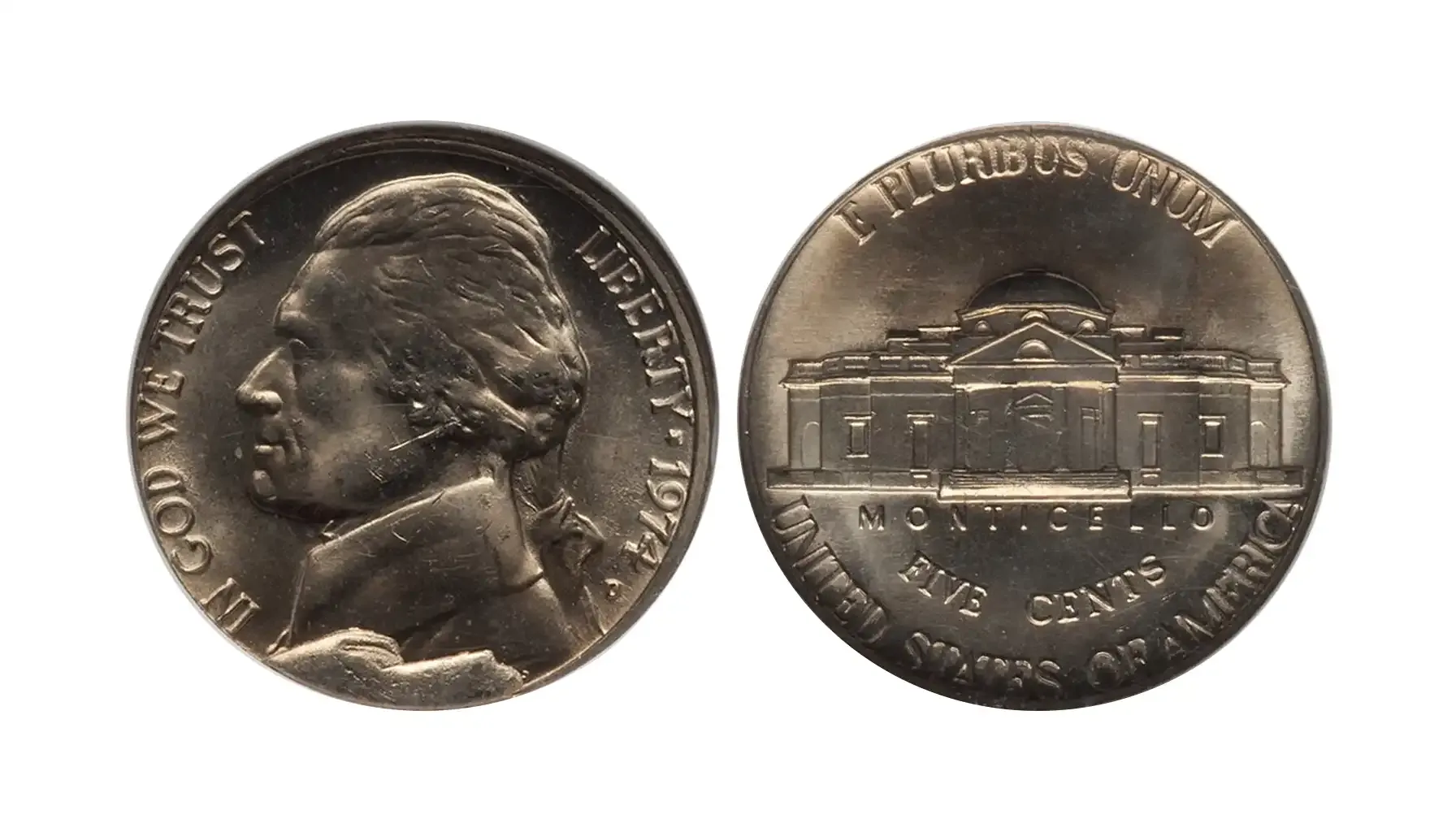
A crack on the obverse stamp.
The crack appears as a raised line on the surface of the coin.
It may vary in length and position.
Stamp cracks occur because of wear or damage to the minting tool. Such defects are transferred to the coins, creating unique “patterns” that make the coin interesting for collecting.
1974-D Nickel with Obverse Misaligned Die
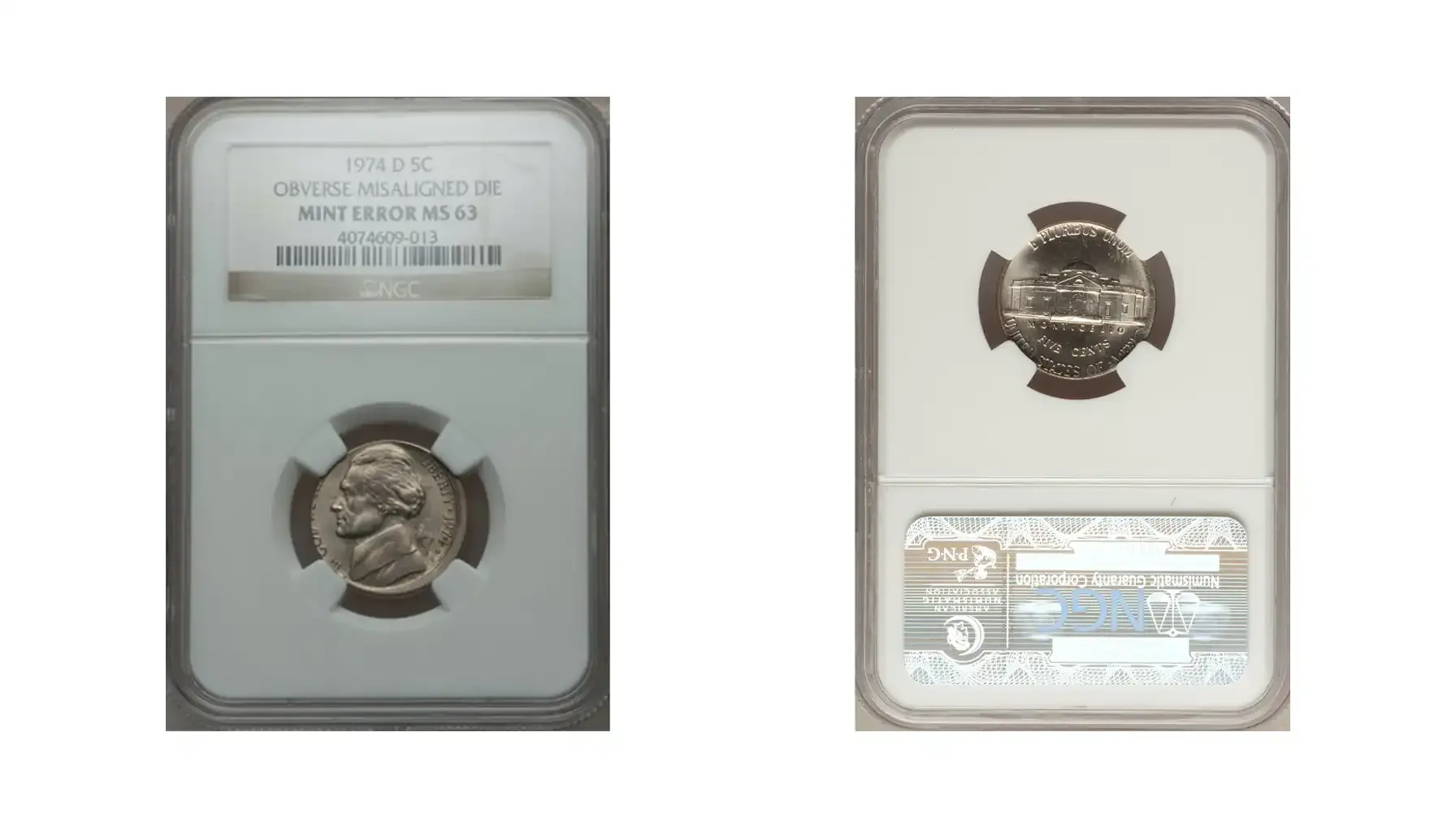
Displacement of the stamp on the obverse of the coin.
The image on one side of the coin is displaced relative to the other.
May cause distortion of the design and text.
Die misalignment occurs when the top and bottom dies are not properly aligned during minting. This causes the image on one side of the coin to shift, creating visually noticeable flaws.
1974 Nickel with Full Steps
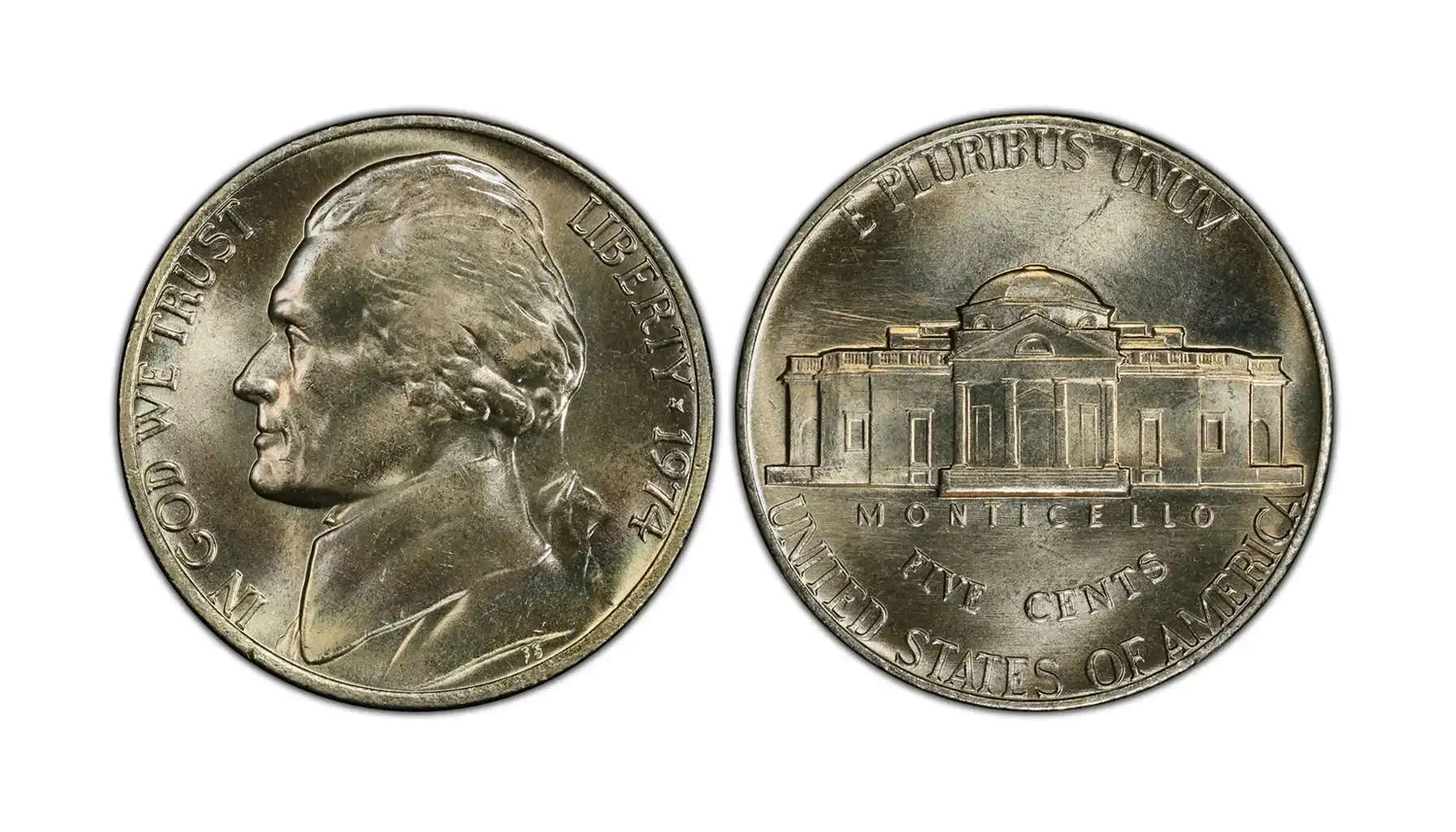
Clearly visible all the steps in the Monticello image.
Designated as 5FS or 6FS depending on the number of steps visible.
The rarity of these coins increases their value.
While the presence of full steps is not a complete minting error, it is rare, especially for 1974 coins. Clearly defined steps show high quality minting and make these examples highly valuable to collectors.
Is a 1974 Nickel Worth Anything?
The 1974 coins are a loophole into the world of American coinage. Although the year was not a transitional or anniversary one, still, some specimens proved to be real finds for collectors. Below is a table showing the approximate value of the coins we discussed.
1974 Jefferson Nickel Value Chart
Type / Variety | Estimated Value Range (by Condition)* |
1974 Nickel no mint mark value | $0.05 – $30 (in MS67+) |
1974-D Nickel (Denver) | $0.05 – $35 (in MS67+) |
1974-S Proof Nickel (San Francisco) | $2 – $10 (Proof, depending on quality and cameo) |
1974 Nickel with Full Steps (all mints) | $10 – $3000 (depending on mint mark and grade 5FS/6FS) |
1974 Nickel Struck on a 1973 Nickel | $15,000 – $17,500 |
1974-D Nickel Struck on Split Planchet Before Strike | $300 – $2,500 |
1974 Nickel with Obverse Die Crack | $5 – $80 |
1974-D Nickel with Obverse Misaligned Die | $10 – $150 (depending on the degree of displacement and preservation) |
*Coin market is dynamic — prices may increase or decrease over time depending on rarity, demand, condition, and economic factors. So, always refer to up-to-date and reliable sources or certified graders for accurate valuation.
Tip for newcomers: If you think your nickel is valuable or want to know exactly what the 1974 no mint mark nickel value is (or the worth of any other coin) or even maybe you are unsure of its type, origin or rarity, use the Coin ID Scanner app. It will help you quickly and accurately recognize all the details and give you an approximate price. Install the app so you don't miss a worthy variant among the many common coins.
Finally you know that 1974 coins are a prime example of how even mass minting can produce specimens with collectible value. Attention to detail, basic knowledge of minting varieties and errors - all this can turn an ordinary nickel into an interesting and valuable piece of numismatic history and worthy collectible for all interested in.

